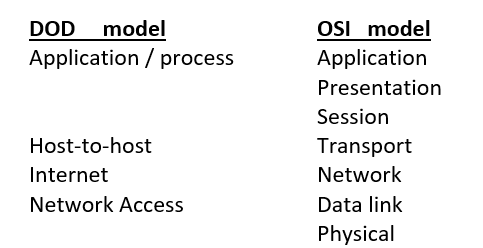TCP/ IP
A suite of protocols
TCP
- Rules that dictate how packets of information are sent across multiple networks
- Addressing
- Error checking
IP
- Determines where packets are routed based on their destination addresses
- Breaks packets into smaller packets and reassembles them.

TCP/IP PROTOCOL SUIT
PROTOCOLS
The Process / Application layer protocols
- Telnet – Terminal Emulation
- allows a user on a remote client machine called the Telnet client, to access the resources of another machine, the Telnet Server [ virtual terminal ]
[Port no. 23]
- File Transfer Protocol
- FTP is a program operating as protocol
- Used for file transfer between two systems
- Can access both directories and files and can accomplish certain types of directory operations.
- FTP uses Telnet to transparently log on to FTP server.
- Uses authentication secured with user names and passwords.
** Directory Manipulation
- Typing file contents
- Copying file between hosts
- It can’t execute remote files as programs. [ port no. 21]
- TFTP – Trivial File Transfer Protocol
- Stock version of FTP
- Fast
- No directory-browsing abilities
- Sends or receive much smaller blocks of data than FTP
- No authentication, so its insecure [port no. 69]
- NFS – Network File System
- protocol specializing in file sharing
- allows two different types of file system to interoperate port no
- SMTP – Simple Mail Transfer Protocol
- Used to send mail or e-mail
- POP 3 used to receive mail [ port no. 110]
- Port no. 25
- LPD – Line Printer Daemon
- designed for printer sharing
- LPD along with LPR [ Link Printer Program]
- Allows print jobs to be spooled and sent to network printers using TCP/IP
- Port no.